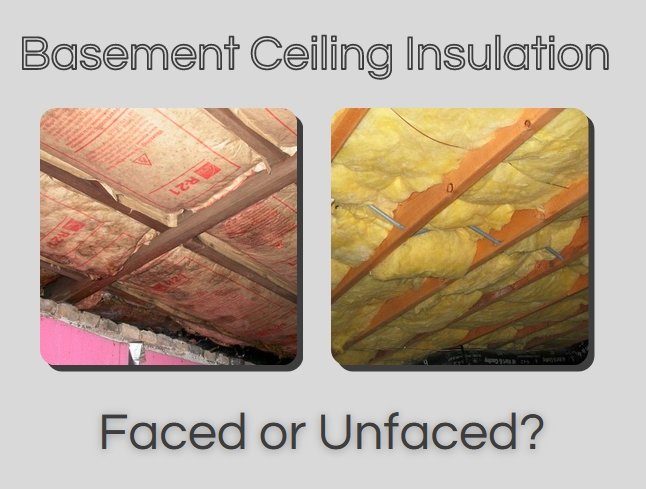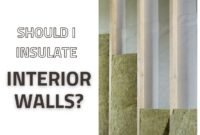Why should you think about basement ceiling insulation faced or unfaced? Homeowners may have to decide which kind of insulation they want to have. Whether they use faced or unfaced type, they need to make the decision before buying any materials.
Faced insulation means that the insulation has a plastic or paper layer, which is located on one particular side. This kind of arrangement is handy to stop the cold air from going through the material. The unfaced insulation, on the other hand, means that this insulation doesn’t have this kind of barrier.
There is no extra layer, so you can’t expect added protection for this kind of insulation.

Does Ceiling Insulation Need to be Faced?
The decision about your basement ceiling insulation faced or unfaced depends on your personal requirements. It also depends on your budget and what to expect from the installed insulation. Some people want to have the extra protection offered by the insulation, and they don’t mind the extra expenses. Some may want the same protection, but they can’t really afford it, so they go with the inexpensive option.
There is basically nothing right or wrong when it comes to choosing the type of insulation type. Feel free to choose the insulation fitting your requirements, with any material that fits your needs.
If you are loaded, deciding on which insulation may not be a difficult option, but you need to be financially wise if you are running on a tight budget.
Which Way Should Insulation Face in Basement Ceiling?
If you want to enjoy the best insulation, especially for the basement ceiling, don’t forget to consider the placement and the layout. If your basement doesn’t have insulation, you can consider the faced insulation. The paper should face the heated (living) space.
What if the basement already has insulation, you need to use the unfaced type. It is able to add more insulation to the construction.
Faced Insulation Advantages and Disadvantages
If you decide to use the faced insulation, some of the advantages may include extra protection. The insulation comes with a vapor retarder and barrier, so your house can be protected from moisture (as well as other elements).
Thanks to this nature, you won’t have to worry about corrosion, mold, or rot. Moreover, this kind of insulation is available in long batts or rolls with pre-cut characteristics that can fit the (basic) basement dimensions.
In general, this kind of insulation is costlier. You will have to deal with extra expenses, as it’s not as ‘cheap’ as the unfaced type. If you have the budget, you can seriously consider this option.
Unfaced Insulation Advantages and Disadvantages
When it comes to simplicity and easiness, the unfaced type is way simpler. Not to mention that it can offer thorough and complete coverage, and you don’t have to worry about the additional cost typically related to the facing.
Read also: What Is Unfaced Insulation?
However, you should remember that unfaced insulation is the perfect option when you want to have more than just one layer (of insulation). Because of the open structure, you can enjoy more airflow. This helps with cooling and also heating costs.
The disadvantage is that this insulation is more prone to tearing. It’s generally not as strong as the faced type. That’s why it’s crucial that you are being extra careful when you install this insulation. It’s definitely not for DIYers. If you don’t know anything about this insulation process, leave it to the pros.
Conclusion
In the end, make sure that you make the proper decision that fits your condition. It takes a careful decision and also thorough research about basement ceiling insulation faced or unfaced so you won’t regret your decision in the future.


